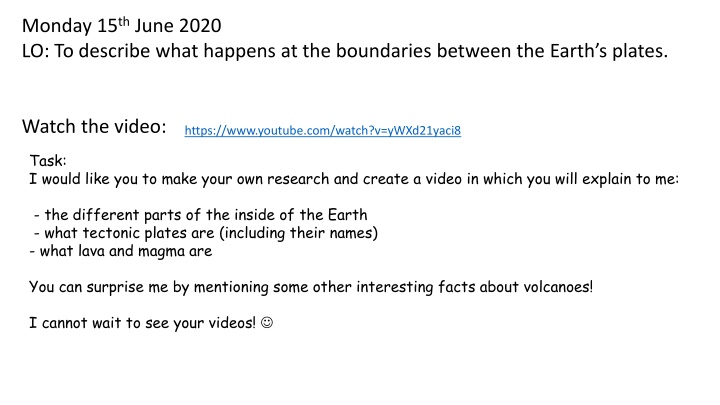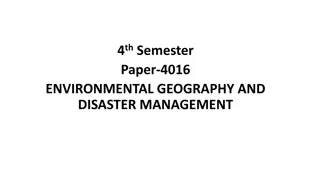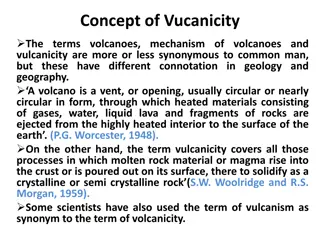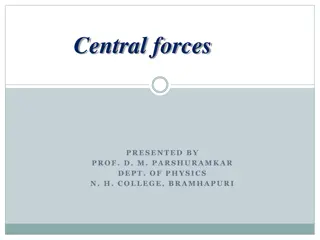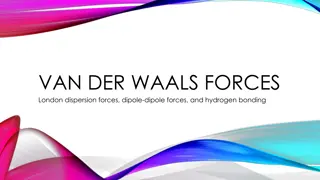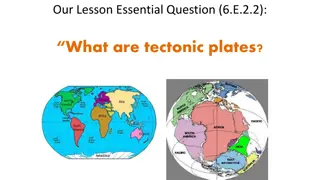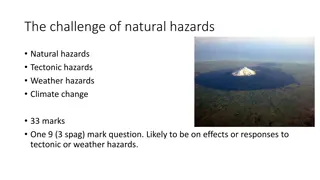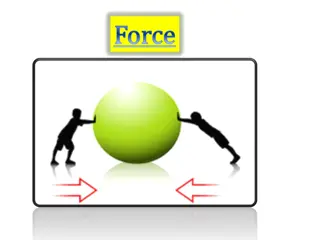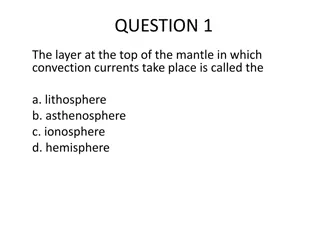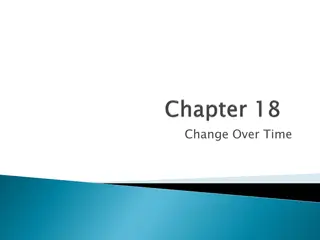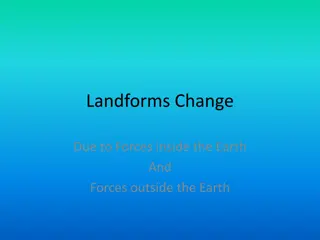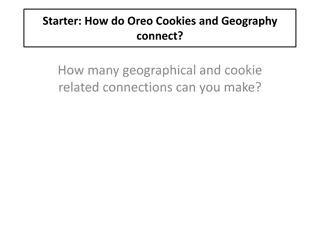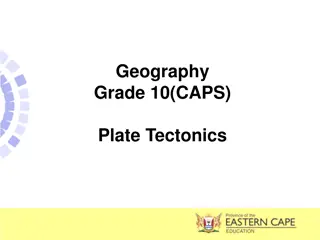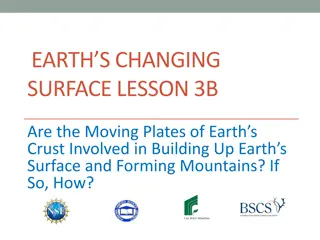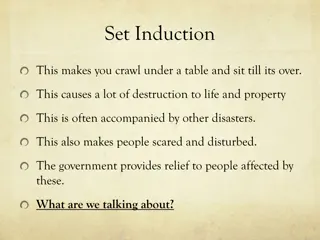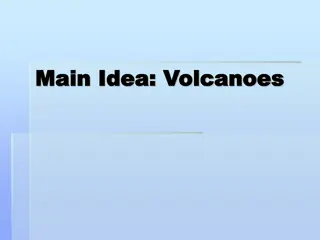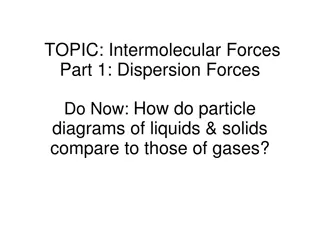Forces of Nature: Volcanoes and Tectonic Plates
Embark on a journey to uncover the mysteries of the Earth's inner workings by delving into the dynamics of tectonic plates, magma, and lava. Discover the marvels of volcanoes, from their key features to the impact of volcanic eruptions on both the environment and people. Engage in creative tasks like making posters and videos to enhance your understanding of these fascinating natural phenomena.
Download Presentation

Please find below an Image/Link to download the presentation.
The content on the website is provided AS IS for your information and personal use only. It may not be sold, licensed, or shared on other websites without obtaining consent from the author.If you encounter any issues during the download, it is possible that the publisher has removed the file from their server.
You are allowed to download the files provided on this website for personal or commercial use, subject to the condition that they are used lawfully. All files are the property of their respective owners.
The content on the website is provided AS IS for your information and personal use only. It may not be sold, licensed, or shared on other websites without obtaining consent from the author.
E N D
Presentation Transcript
Monday 15th June 2020 LO: To describe what happens at the boundaries between the Earth s plates. Watch the video: https://www.youtube.com/watch?v=yWXd21yaci8 Task: I would like you to make your own research and create a video in which you will explain to me: - the different parts of the inside of the Earth - what tectonic plates are (including their names) - what lava and magma are You can surprise me by mentioning some other interesting facts about volcanoes! I cannot wait to see your videos!
Tuesday, 16th June 2020 LO: To describe and explain the key features of a volcano. Task: Create your own poster showing me the different parts of a volcano. If you re up for a challenge, you could make a colourful 3D model. Have fun!
Volcanoes are openings in the Earths surface. When they are active they can let ash, gas and hot magma escape in sometimes violent and spectacular eruptions
Thursday 18th June 202 LO: To report on the effects of a volcanic eruption. Look at the table on the next slide which mentions the effects of a volcanic eruption. Task: This task is linked to our English lesson. I would like you to create a non-chronological report about volcanic eruptions. Please see the English Thursday lesson for details.
Wednesday 17th June 2020 Lo: To locate a range of famous volcanoes and find out some key facts including when the volcanoes last erupted. Look at the video about famous volcanoes. https://www.youtube.com/watch?v=DiIexCoMiuU Task: Create a PowerPoint about famous volcanoes. Tell me where they are, what type of a volcano it is and when it was the last time it erupted. I would like to see some pictures too. Have fun with this task!
Effect of Volcanoes on people and the environment Volcanoes can have a very serious effect on the lands and people around them when they erupt. Buildings are destroyed and people are made homeless. People are killed. Clouds of ash cover plants making them inedible. Poisonous gases kill people and animals. Dust causes pneumonia and illnesses to the survivors. Dark skies, severe winds and heavy rains may follow an eruption for months afterwards. One in 10 people in the world live within 'danger range' of an active volcano. People can get used to living near a volcano, but it is always a little dangerous. Scientists have estimated that at least 200,000 persons have lost their lives as a result of volcanic eruptions during the last 500 years. People set up homes on the slopes of volcanoes because of the rich, fertile soil produced.
Friday 19th June 2020 LO: To evaluate the advantages and disadvantages of living near a volcano. Task: Look at the slides showing the consequences of living near a volcano. Write a story set in a town near a volcano. Think: -how will your story begin? -who are your characters are going to be? -what will be the most exciting part of the story? -what problem will your characters face? -how will your story finish?
As well as the danger from the hot lava, an erupting volcano can trigger are life threatening things. tsunamis flash floods earthquakes mud flows rock falls.
Teacher Success Criteria Continuous: Neat, joined handwriting (Cursive) Correct punctuation (Aa ,.!? ) Fronted adverbials with commas(All of a sudden, Behind the looming tower, ) Conjunctions (and, so, but, when, if, although, because, since) Expanded noun phrase with preposition (The loud, revving car with bright headlights.) Paragraphs (to organise your ideas) Me Narrative: Third person (They, She, He, Her, His) Past tense (went, ed verbs, saw etc.) Descriptive language- adjectives, similes, metaphors (sparkling green like emeralds, heart of gold) Chronological order (First, then, later) Direct Speech ( I can t believe it! Mum exclaimed.)
